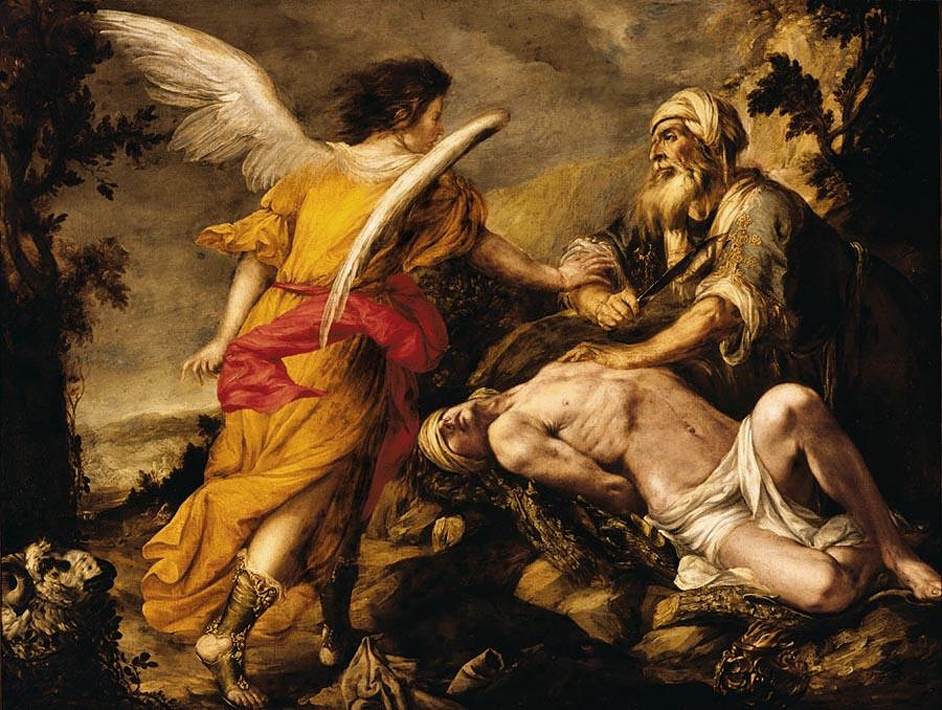SECOND SUNDAY OF LENT (B)
Today’s gospel reading (Mk 9:2-10) gives us the story of Jesus’ transfiguration, when Peter, James and John witness Christ shining in all His heavenly glory, standing on the mountaintop with Moses and Elijah. The transfiguration is ripe with meaning and significance. After predicting His passion and death, Christ gives His disciples a preview of the glory of His resurrection, and indeed the glory that awaits us as His followers. He converses not just with two random figures from the Old Testament, but with Moses and Elijah, representing the law and the prophets. Jesus is shown as the One whom the law and the prophets were pointing towards, their end and their fulfillment.
That Jesus is the fulfillment of the old covenant is why the Church also gives us today the story of Abraham sacrificing his son Isaac. This is one of the better known stories from Genesis, but perhaps we do not know it as well as we think we do. For those who are not familiar, God asks Abraham to take his only son to Moriah to be offered as a sacrifice. Abraham obeys, and takes Isaac with him to the top of the mountain, carrying the wood for the sacrificial pyre. He binds his son and lays him on the wood, but at the last moment an angel tells him to stop. A ram appears caught in a thicket, so Abraham sacrifices the ram instead. God tells him that because he did not withhold even his own son from Him, Abraham and his descendants will be blessed.
On our first reading of this story, we may be shocked that God would ask one of his faithful followers to make such a harsh sacrifice. But on second reading, we may recall that God was willing to sacrifice His Son for us. When we read the story a third time, we may marvel at Abraham’s obedience and unshakable faith. And maybe on a fourth reading, we notice the son. Our reading from the Lectionary today only gives us excerpts from this passage in Genesis. I encourage you to open your Bible and read all of chapter 22. One of the verses not found in today’s reading is Gen 22:6. “Thereupon Abraham took the wood for the holocaust and laid it on his son Isaac’s shoulders, while he himself carried the fire and the knife.”
Isaac carried the wood.
We tend to imagine Isaac as a child. I did a little experiment and did a Google image search for “Abraham and Isaac.” I was not surprised to find that much of the modern artwork depicting this scene shows Isaac as a young boy. But older artwork shows him as a young man, fully grown. The scriptures do not tell us how old Isaac was at this time. But we do know that Abraham was already a hundred years old when Isaac was born (Gen 21:5). By this time, Isaac was definitely the stronger of the two, which is why he had to carry the wood.
Another verse not given us in today’s reading is Gen 22:9b, “Next he tied up his son Isaac, and put him on top of the wood on the altar.” When we read this, we would be wrong to imagine a strong adult man tying up a young child. Abraham was in his advanced old age, while Isaac was large and strong enough to carry a large amount of wood to the top of a mountain. Isaac at any point could have overpowered the feeble Abraham, yet he allowed himself to be bound, knowing full well what that meant.
Both Abraham and Isaac demonstrate great faith and obedience. Abraham was willing to sacrifice his son. Isaac was willing to be sacrificed. Jesus, too, was completely obedient to the Father, and Jesus, too, was a willing sacrifice. Like Isaac, Jesus carried the wood for His sacrifice. Like Isaac, Jesus allowed Himself to be bound. When Abraham told Isaac that “God Himself will provide the sheep for the holocaust,” that prophecy was fulfilled not by the ram in the thicket, but by the sacrificial offering of God’s own Son.
Jesus’ transfiguration took place just after He began to teach about His own coming passion (Mk 8:31). Peter objects to the idea that Jesus, whom he loves, should have to suffer and die. Jesus rebukes him, and teaches that “Whoever wishes to come after me must deny himself, take up his cross, and follow me. For whoever wishes to save his life will lose it, but whoever loses his life for my sake and that of the gospel will save it” (Mk 8:34-35). It is then, after this difficult saying, that Jesus takes Peter, along with James and John, to the mountain top and is transfigured before them. Being obedient, holding nothing back from God, and being willing to deny yourself to the point of losing your very life are hard, hard things to do. But this is the Christian life. This is the only way to save your life.
Jesus shows us what lies down that road — suffering, trial, persecution, even death, but also life, glory, radiance and beauty. Jesus blazes the trail of obedience so that we may follow Him down that path. Let us pray this Lent for the faith of Abraham and Isaac. Let us pray for the strength to carry our cross and follow Jesus. Let us pray for the grace of obedience to our heavenly Father. And let us pray that we may be transfigured, formed into Christ, sharers in His divine glory.
—
WCU Catholic Campus Ministry
Matthew Newsome, MTh, campus minister


